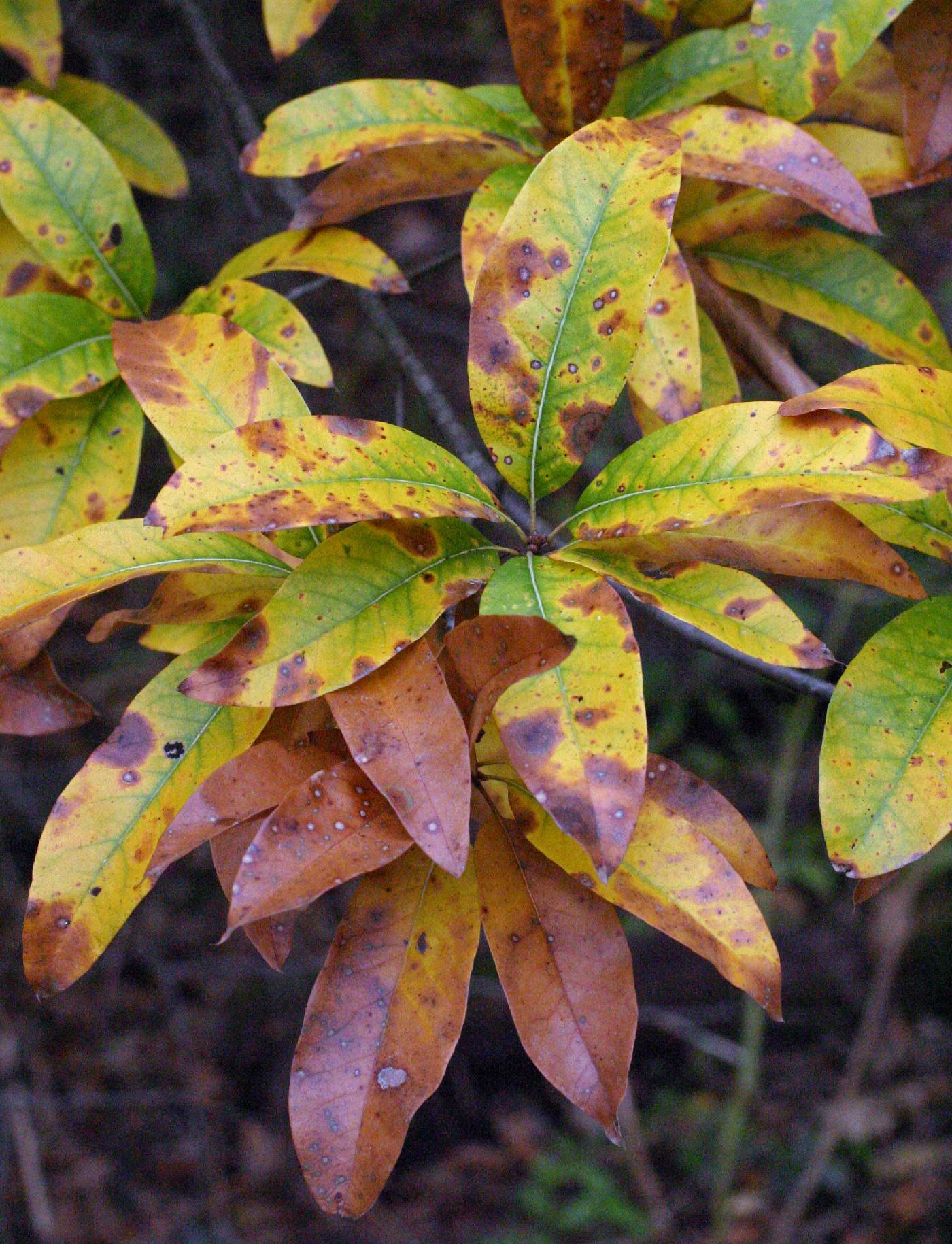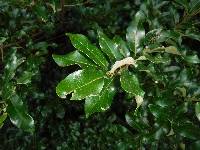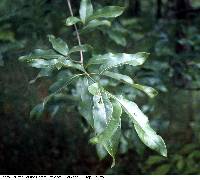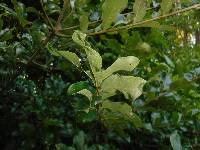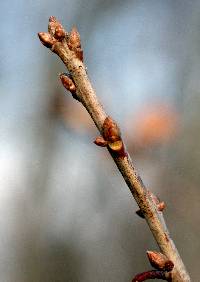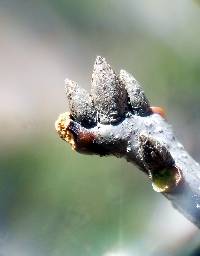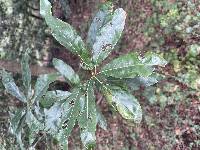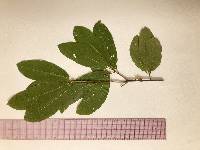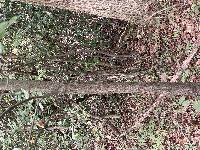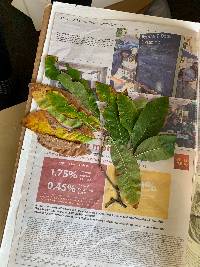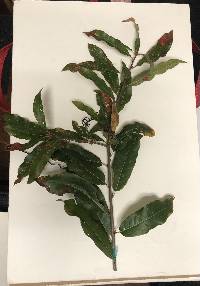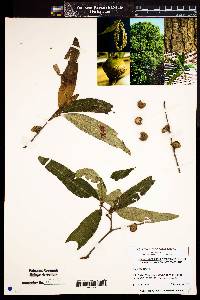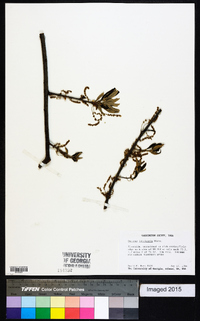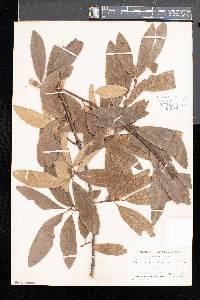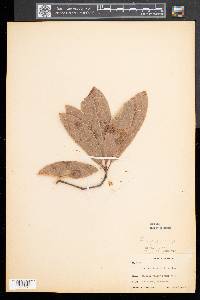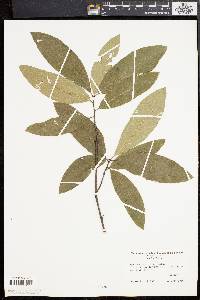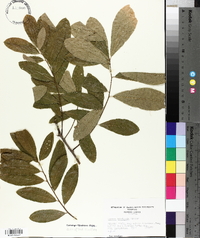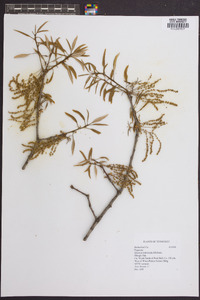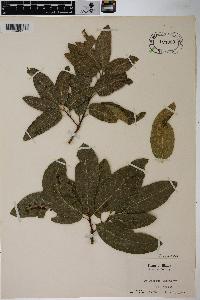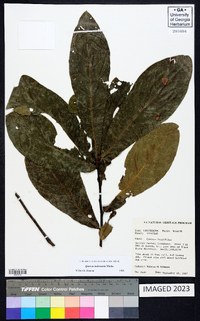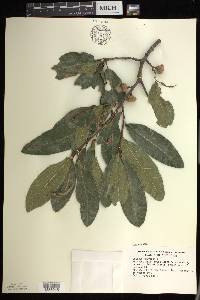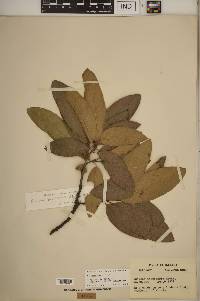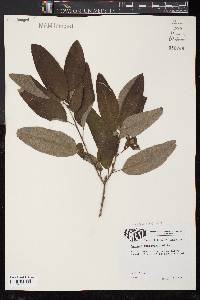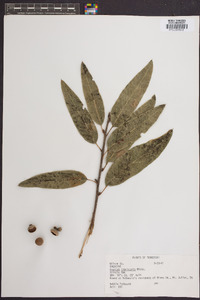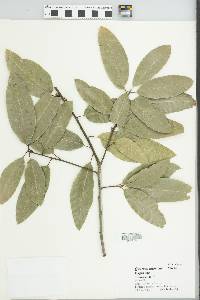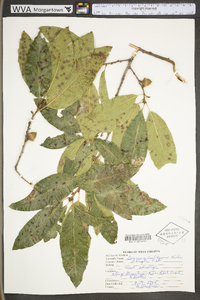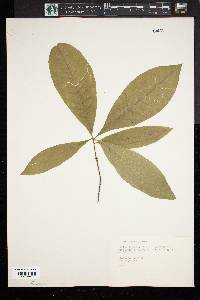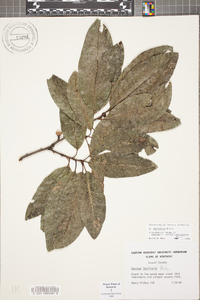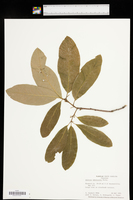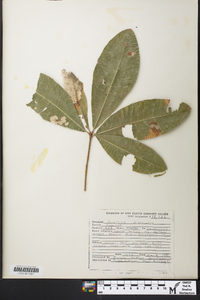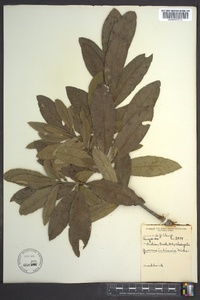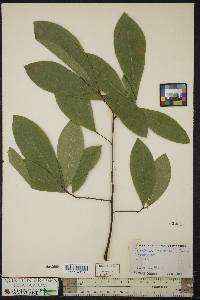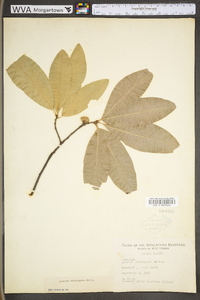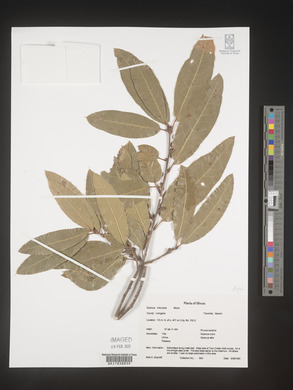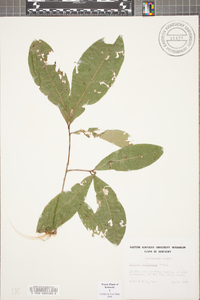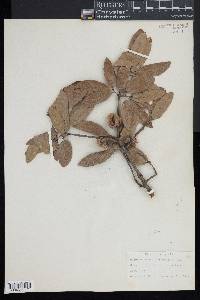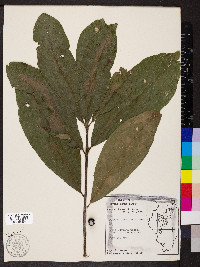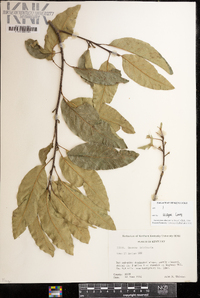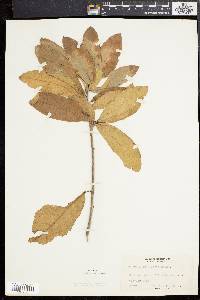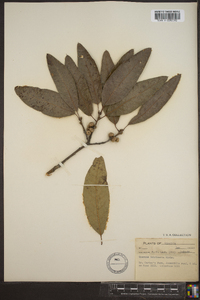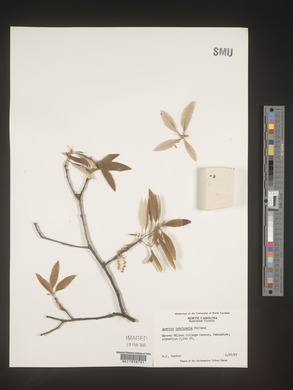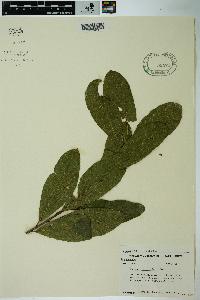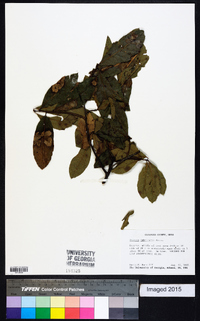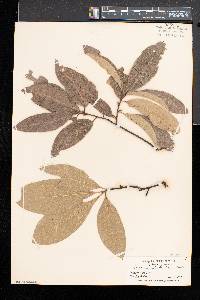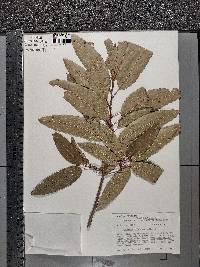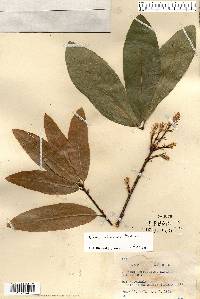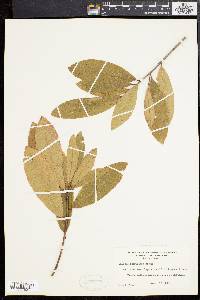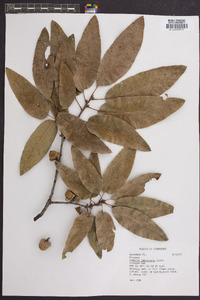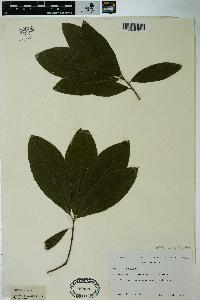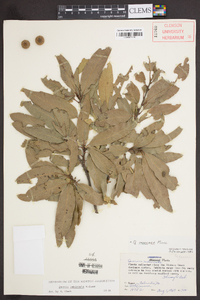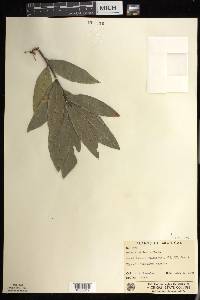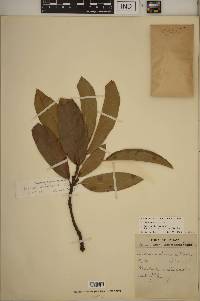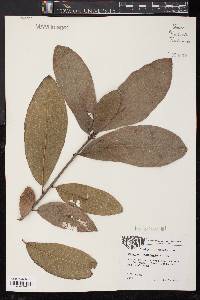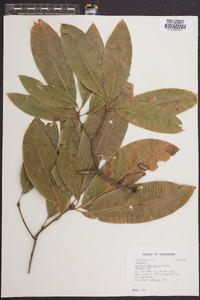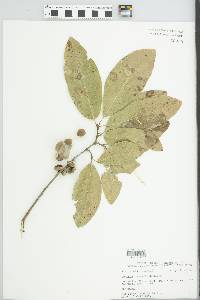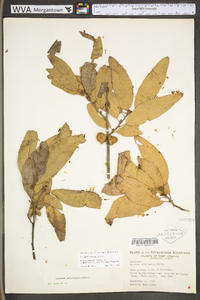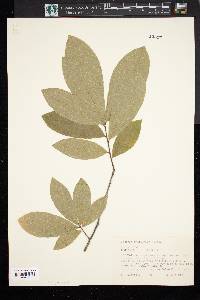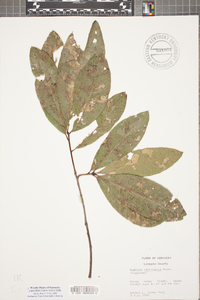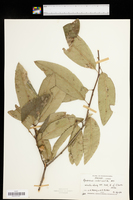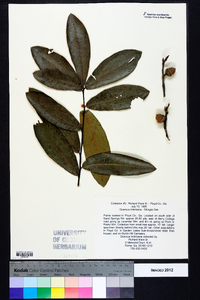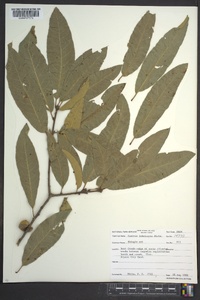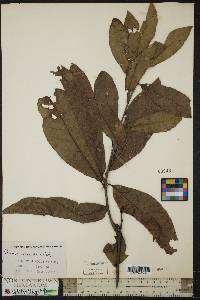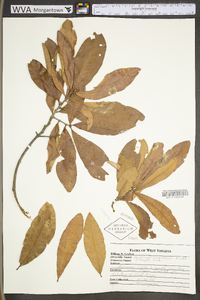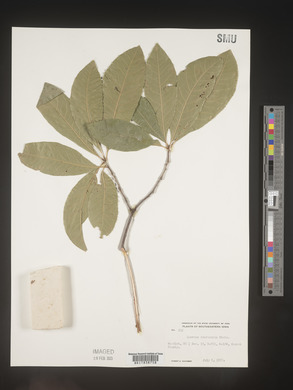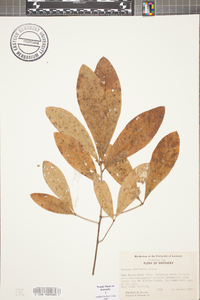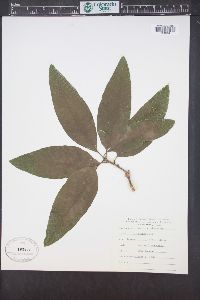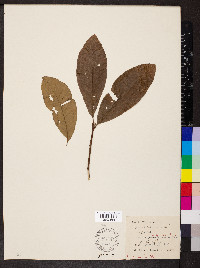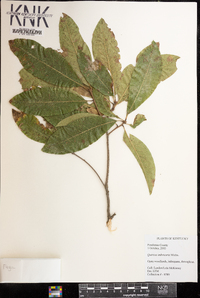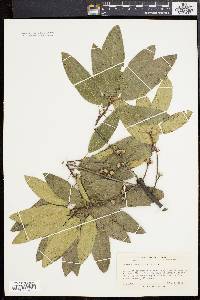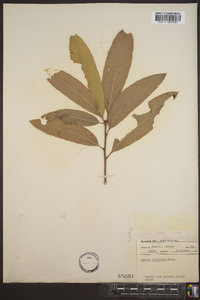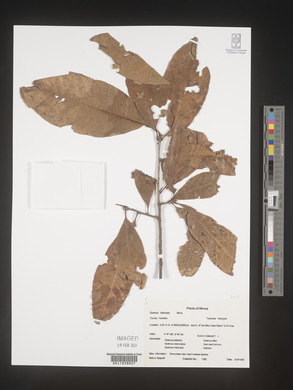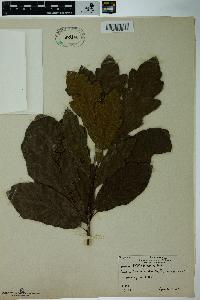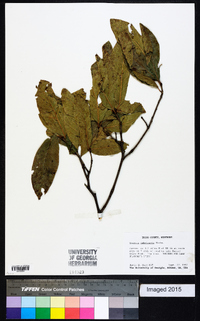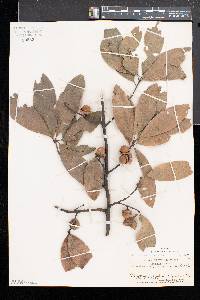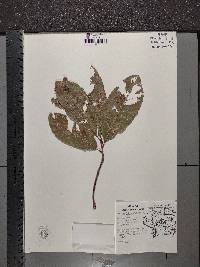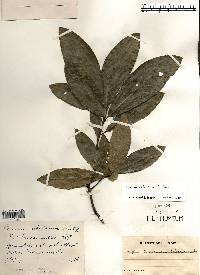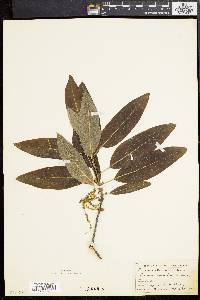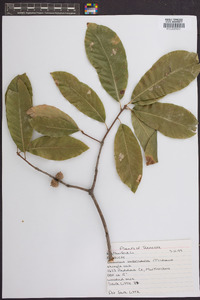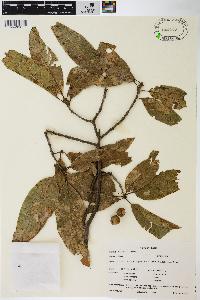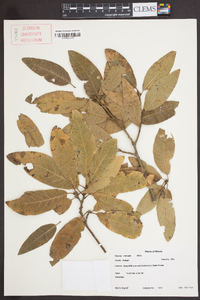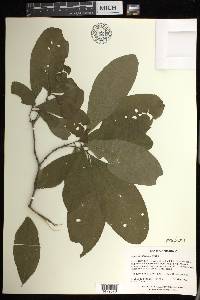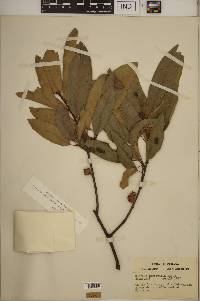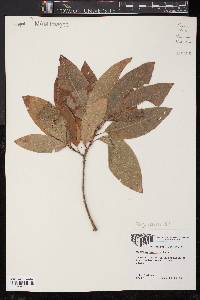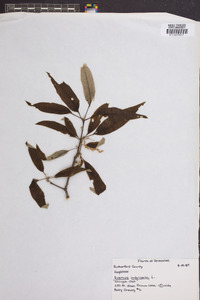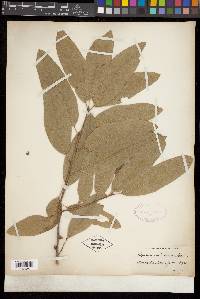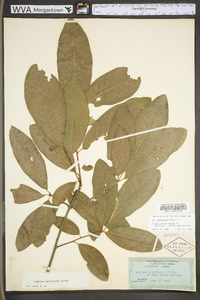Quercus imbricaria
|
|
|
|
Family: Fagaceae
Shingle Oak
[Quercus latifolia] |
Trees , deciduous, to 20 m. Bark grayish brown, fissures and ridges shallow, inner bark pinkish. Twigs greenish brown to brown, 1.5-3(-4) mm diam., glabrous or sparsely pubescent. Terminal buds brown to reddish brown, ovoid, 3-6 mm, distinctly 5-angled in cross section, scales minutely ciliate on margins. Leaves: petiole 10-20 mm, glabrous. Leaf blade ovate or elliptic to obovate, usually widest near middle, 80-200 × 15-75 mm, base obtuse to cuneate, occasionally rounded, margins entire with 1 apical awn, apex acute to obtuse; surfaces abaxially uniformly pubescent, adaxially lustrous, glabrous. Acorns biennial; cup deeply saucer-shaped to cup-shaped, 5-9 mm high × 10-18 mm wide, covering 1/3-1/2 nut, outer surface puberulent, inner surface light brown to reddish brown and glabrous or with a few hairs around nut scar, scale tips tightly appressed, acute; nut ovoid to subglobose, 9-18 × 10-18 mm, often striate, having 1 or more indistinct rings of minute pits at apex, glabrate, scar diam. 5-9 mm. 2 n = 24. Flowering spring. Moderately dry to mesic slopes and uplands, occasionally in ravines and bottoms; 100-700 m; Ark., Del., D.C., Ill., Ind., Iowa, Kans., Ky., La., Md., Mich., Mo., N.J., N.C., Ohio, Pa., Tenn., Tex., Va., W.Va. The wood of Quercus imbricaria was once an important source of shingles, hence its common name. The Cherokee used the bark of Quercus imbricaria to treat indigestion, chronic dysentery, mouth sores, chapped skin, general sores, chills and fevers, lost voice, milky urine, and as an antiseptic and a general tonic (D. E. Moerman 1986). This species reportedly hybridizes with Q . coccinea (W. H. Wagner Jr. and D. J. Schoen 1976); with Q . falcata (producing Q . × anceps E. J. Palmer) and Q . ilicifolia (D. M. Hunt 1989); with Q . marilandica , Q . palustris , and Q . phellos (H. A. Gleason 1952); and with Q . rubra , Q . shumardii , and Q . velutina .
Tree 10 - 18 m tall, trunk 30 cm - 0.6 m in diameter Leaves: alternate, short-stalked, shiny and dark green above, paler and hairy beneath, 13 - 18 cm long, 4 - 7 cm wide, narrow oblong, bristle-tipped, non-toothed to wavy. Leaves turn brown in fall and hold through winter on young trees. Flowers: either male or female, found on the same tree (monoecious), yellow male flowers borne on hanging catkins 5 - 7 cm long, greenish yellow female flowers borne in clusters of two to three near leaf axils. Fruit: an acorn, maturing in two seasons, solitary or in pairs, with a stalk to 1.2 cm long. The cup is thin and bowl-shaped, covering one-third to half of the nut, with reddish brown scales that are appressed and downy. Nut dark brown, 1.2 - 1.6 cm long, almost spherical, often with very thin longitudinal stripes. Bark: gray and smooth, turning light grayish brown and shallowly fissured with age. Twigs: shiny dark green, becoming brown. Buds: shiny brown, 3 - 4 mm long, egg-shaped with pointed tips, scales with very tiny hairs along margin. Each terminal bud is surrounded by a cluster of lateral buds. Form: open and rounded with slender branches. Similar species: The non-toothed leaves of this species make it easy to distinguish from other oaks in the Chicago Region. Flowering: May Habitat and ecology: Locally common in dry woods or near eroded farmland, Q. imbricaria also inhabits floodplains, bottomlands, and moist, fertile slopes. Occurence in the Chicago region: native Notes: Pioneers used the wood of this species to make shingles or shakes. Quercus imbricaria naturally hybridizes with Q. velutina (Q. x leana) and Q. rubra (Q. x runciniata). Etymology: Quercus is the Latin word for oak. Imbricaria comes from the Latin word imbrex, meaning "overlapping in order," like tiles or shingles. Author: The Morton Arboretum Medium-sized tree; bark with flat gray ridges and shallow furrows; twigs soon glabrescent; lvs dark green, shining, firm, oblong or lance-oblong, occasionally oblong-obovate, 10-17 נ3.5-7 cm, bristle-tipped, entire, glabrous above, softly and loosely pubescent beneath; a crown of dry tan or brown leaves remaining well into winter and even into early spring; acorn 12-16 mm, the cup 6-8 mm, with relatively few and broad scales. Dry upland soils; e. Pa. to s. Mich., O., and Kans., s. to N.C., Ga., and Ark. Gleason, Henry A. & Cronquist, Arthur J. 1991. Manual of vascular plants of northeastern United States and adjacent Canada. lxxv + 910 pp. ©The New York Botanical Garden. All rights reserved. Used by permission. From Flora of Indiana (1940) by Charles C. Deam Found sparingly throughout the state. In some places it is very local and in a few areas it is frequent and locally abundant. Usually it is a tree of low ground and in some places in prairie habitats, it seems to be the pioneer tree species. In the Patoka bottoms it is usually a frequent to common tree in ground just a little higher than where the pin oak grows. On high ground it is usually closely associated with the black oak. …… Indiana Coefficient of Conservatism: C = 3 Wetland Indicator Status: FACU Deam (1932): Wood similar to red oak, but much inferior. Evidently a slow growing tree, but it might find a use as a shade or ornamental tree in sandy habitats where other oaks would not thrive. |
|
|
|

